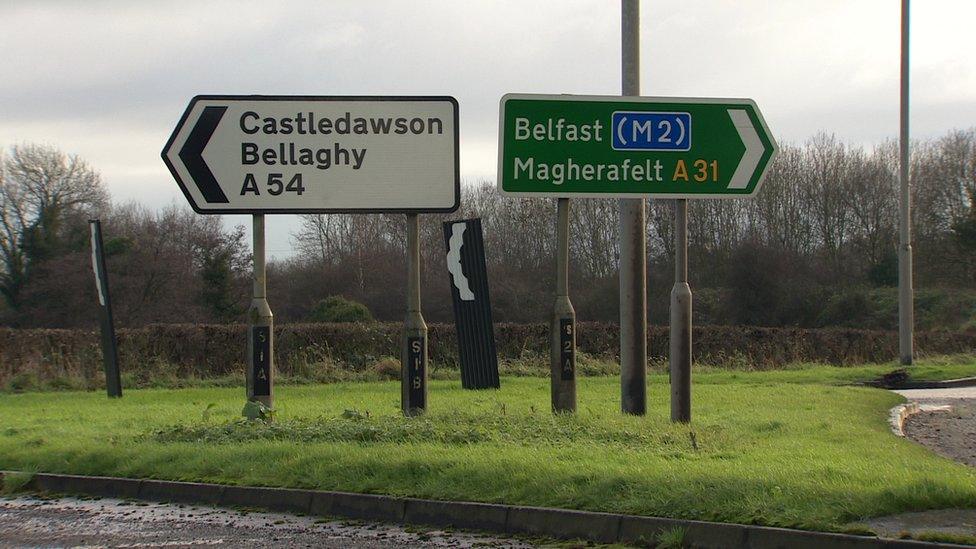A6: New dual carriageway to take over three years to complete
- Published

Transport NI is targeting late 2019 or early 2020 for the A6 to be completed
A proposed new dual carriageway between Londonderry and Belfast is expected to take three-and-a-half years to complete, Northern Ireland's roads authority has said.
More than 100 landowners will have their land vested before work begins on the A6 road later this year.
It will replace the existing route from Castledawson in County Londonderry to the M22 motorway to Belfast.
Transport NI has said it hopes the work will begin at the end of this summer.
Affected
Before that, vesting and potential archaeological issues must be settled.
Andrew Hitchener, the project manager, said: "We will continue to work with landowners to engage with them and try to accommodate any of their concerns within the scheme.
"There's in the region of 120 agricultural and non-agricultural landowners that will be affected.
"At the start of the scheme, we will be doing archaeological work to clear the site to ensure there's no delays further along the scheme."
Complexity
Almost 14km (8.7 miles) of new dual carriageway will be constructed, and the stretch of road will have five major junctions and flyovers.
A park-and-ride at Toomebridge, County Antrim, will be relocated to provide more parking space and increase safety for bus passengers.
The target is to have the road open by late 2019 or early 2020.
Mr Hitchener added: "Our experience of schemes of this size and complexity are that it takes approximately three-and-a-half years, so that will be a guideline."
Standstill
The existing route sees lengthy tailbacks during peak hours on a daily basis.
In the morning, motorists can travel at up to 70mph once they reach the M22 motorway.
But before they get there, their speed can be reduced to 20mph or even 10mph.
On occasions, during the morning rush-hour, traffic grinds to a complete standstill, resulting in tailbacks stretching for miles.
The scenario is reversed during evening rush-hour as commuters return to the north west from the direction of the M22 motorway.
- Published10 January 2016
